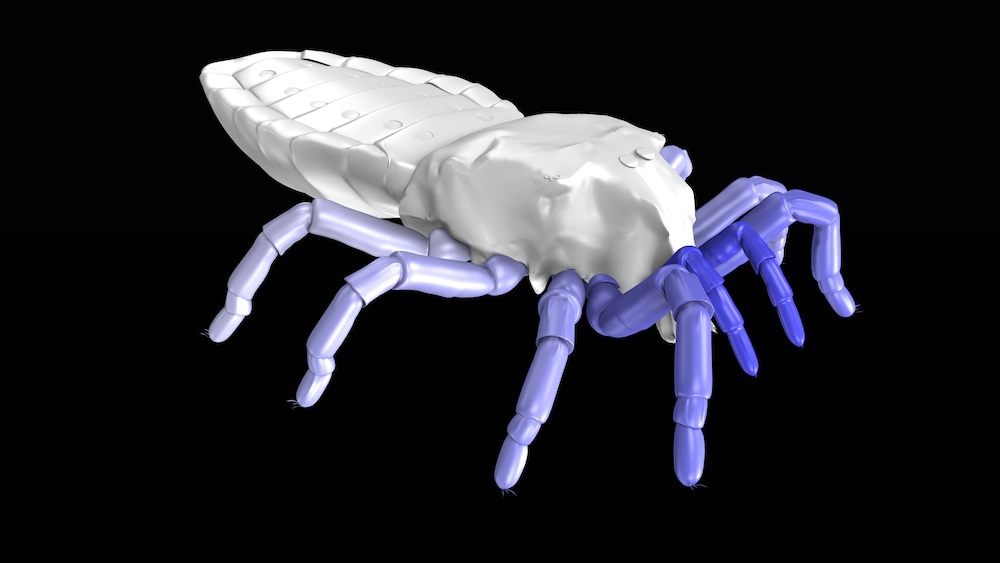
An ancient ancestor to spiders was able to creep again, sort of, as a new video has recreated the walk of the 410-million-year-old beast.
The arachnid's creepy gait was reconstructed based on paper-thin cross-sections of the creature's limbs fossilized in rock in Scotland.
The fossils were found in the Rhynie Chert, a formation where silica-laden water bubbled up from volcanic hot springs, instantly petrifying lichen, plants and primitive insects in stunning detail. [Video: See The Ancient Arachnid's Creepy Walk]
Top dog
The team used several specimens of the extinct spider ancestor, named Paleocharinus, which were housed in the Natural History Museum in London. When the extinct spider ancestor crawled about Earth during the Devonian Period — between 416 million and 358 million years ago — most life still lived in the oceans, though the first insects, including Paleocharinus, first emerged on land.
Paleocharinus may have been an ambush predator, sneaking up on prey and pouncing, the researchers wrote in the paper.
"Long before our ancestors came out of the sea, these early arachnids were top dog of the food chain," study co-author Russell Garwood, a paleontologist in the University of Manchester, said in a statement.
Get the world’s most fascinating discoveries delivered straight to your inbox.
During its heyday, the arachnid was more widespread than spiders are today, Garwood said. But the loss of swampy forests, predation by four-legged creatures, and the rise of spiders may have doomed these creatures to extinction, the researchers write in yesterday's (July 8) issue of the Journal of Paleontology.
Walking Fossil
To recreate the ancient arachnid's gait, the team looked at the limbs of Paleocharinus under a light microscope and took pictures of its cross-section. Some of the fossils were so well preserved the team could still see limb joints and muscle tendons, as well as the darkened thickening on the cuticles of the legs.
The researchers then added anatomical detail into a computer graphics program called Blender, and integrated it with knowledge of how modern spiders walk.
The new simulation reveals that the spiders moved much like modern cursorial spiders, which walk throughout the day to chase prey and run to evade predators.
The researchers previously used the same computer graphics program to recreate the gait of another ancient arachnid, an ancestor to the modern daddy longlegs.
"When I started working on fossil arachnids we were happy if we could manage a sketch of what they used to look like; now we can view them running across our computer screens," study co-author Jason Dunlop, a curator at the Museum für Naturkunde, said in the statement.
Follow Tia Ghose on Twitter and Google+. Follow Live Science @livescience, Facebook & Google+. Original article on Live Science.

Tia is the editor-in-chief (premium) and was formerly managing editor and senior writer for Live Science. Her work has appeared in Scientific American, Wired.com, Science News and other outlets. She holds a master's degree in bioengineering from the University of Washington, a graduate certificate in science writing from UC Santa Cruz and a bachelor's degree in mechanical engineering from the University of Texas at Austin. Tia was part of a team at the Milwaukee Journal Sentinel that published the Empty Cradles series on preterm births, which won multiple awards, including the 2012 Casey Medal for Meritorious Journalism.
 Live Science Plus
Live Science Plus






